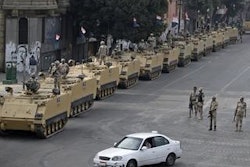Read Part I here and Part II here.
While it might look good on paper, and the chosen fixtures indeed properly rated and certified explosion proof, the use of lower grade fixtures almost guarantees the need for more frequent maintenance intervals in order to ensure premature fixture degradation and failure does not occur. Additionally, lower grade fixtures tend to be fitted with lower quality lamps and electronics, cheaper contacts and wiring, and as a result have a higher rate of failures, bulb burnouts, and downtime, which in turn also increases the cost to operate them.
Perhaps the largest risk comes from the potential for accidents due to fixture failures. U.S. federal hazardous location regulations and regulating bodies such as OSHA make clear that the responsibility for compliance with hazardous location requirements falls primarily with the owners and operators of the facility. This means that should an accident occur and workers become injured, or in a worst case scenario deaths occur, the owners and operators of the facility can be held directly responsible for any failures in equipment should it be found out of compliance in any manner regardless of its status at installation. So, while fitting a facility with high quality explosion proof lighting may initially seem a large expense, if you compare the potential minimal savings from using cheap fixtures to the losses that could easily rise into the millions in the event of a catastrophic incident, there just isn’t any real justification for accepting lower grade equipment.
Although by this point it may seem there is no way around accepting the higher expense of quality explosion proof lighting, it is also important to consider that newer lighting technologies such as explosion proof fixtures fitted with LEDs offer the ability to not only improve lighting performance over older HID and incandescent based systems, but greatly reduce the costs associated with lighting as well. These LED fixtures cost more initially, but can potentially lower operating costs directly stemming from lighting by up to 80%. These savings come in the form of greatly improved lamp longevity (20,000 hour average for HID versus 50,000 hour average for LED), reduced maintenance costs, and much higher operating efficiency.
For example, a typical 20,000 square foot industrial building can see lighting costs in excess of $14,000 annually. With a complete retrofit to LED lighting technology, projections show that lighting costs can be reduced to approximately $4,500 annually. Additionally, over $400.00 a month can be saved on bulb replacements, $1,000 a month on maintenance, and even the reduced air conditioning requirements due to the cooler operation of LEDs can add an additional $300.00 per month in savings. At the bottom line, this means that utilizing newer and more efficient forms of explosion proof lighting can instead of being an added expense, actually end up being a source of positive return on investment in a relatively short period of time.
Illuminating the industrial workplace presents challenges and requirements that must be properly addressed in order to maintain worker safety and compliance with hazardous location regulations where necessary. Although these challenges do serve to increase the initial costs associated with industrial lighting, attempting to reduce these costs through the use of lower grade equipment is really not a practical option. While explosion proof lighting can at initial purchase present an expensive outlay, it is possible to actually improve overall profitability in the long term through the improvements in efficiency and reliability newer lighting technologies such as LEDs offer. In the end, explosion proof lighting represents one area of expense where spending a little more is certainly worth the added cost.
Larson Electronics’ Magnalight has been manufacturing and supplying high grade lighting solutions including explosion proof and intrinsically safe lighting systems to the industrial and commercial sectors for over 40 years. Magnalight maintains a steady commitment to providing the latest in high quality lighting technology and has serviced federal, state and local governments throughout the United States and Europe as well as the US Secret Service, US State Department and US Military.























